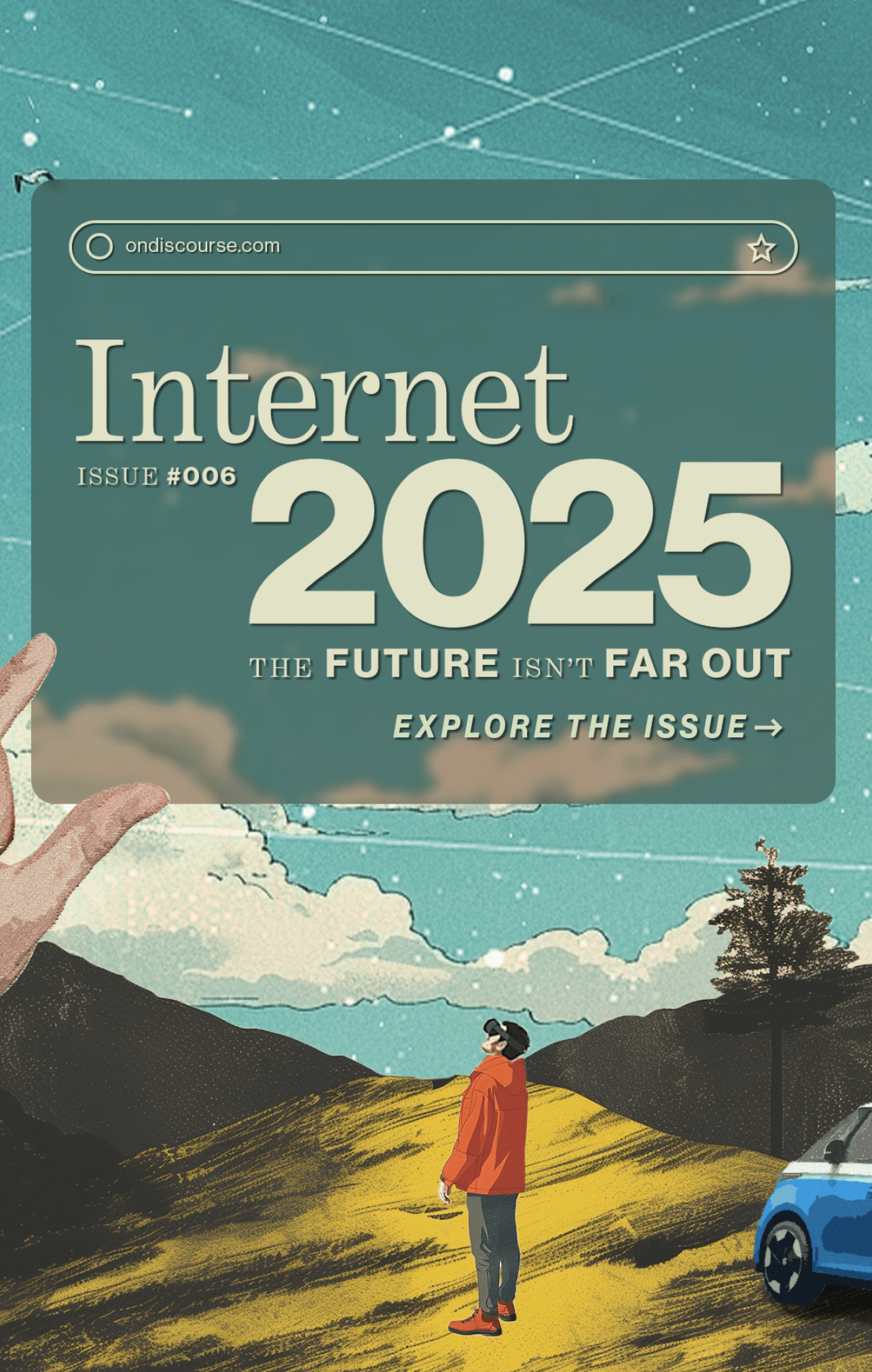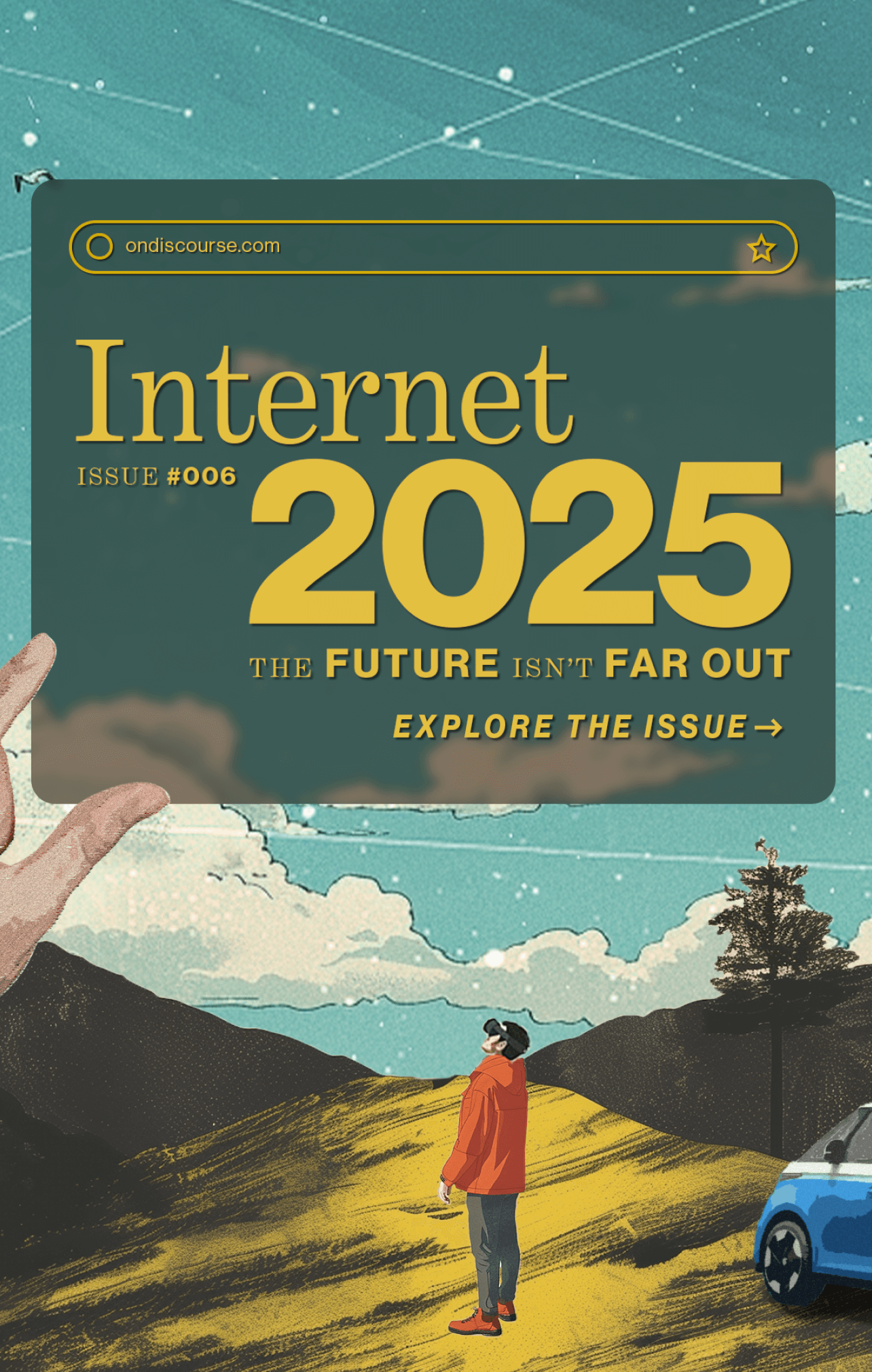AI
Will Reverse
the
Innovator's
Dilemma
Market leaders are the secret winners to AI disruption

Editor’s note: This perspective comes from a consulting leader who deals exclusively in business & tech innovation. As Saneel puts it, the traditional sources of digital disruption are being upended to favor the incumbents. These platforms will be shaping the way generative AI bends a variety of consumer-facing industries into personalized marketplaces.
This post was written by human Saneel Radia and narrated by AI Saneel Radia (powered by Wondercraft.ai).
Amidst all of the noise surrounding the emerging disruptive power of AI – and generative AI in particular – one crucial point seems overlooked and possibly even misunderstood. That’s the fact that AI could be the first technology revolution that better serves the large incumbents and established players than it does the startups looking to disrupt them.
This time, it’s
different
The model for disruptive innovation, originally coined by Clayton Christensen in his seminal book, The Innovator’s Dilemma, has stood the test of time surprisingly well. As Christensen puts it, when disruptive technologies arrive, entire industries change and the lines between them blur. Incumbents are slow to respond because they find it difficult to prioritize the new dynamics over their more sustaining innovation efforts. They start to fall behind to a new set of competition they didn’t recognize to be a threat initially. Over time, these former category leaders are relegated to niche, often premium offerings as the mass market value equation has changed forever. This has proven true repeatedly in categories as diverse as newspapers (the web), cameras (mobile phones), railroads (automobiles), healthcare (retail clinics), and music (streaming).
The pace of that change has only continued to increase based on a view of the most important innovations. This familiar disruptor narrative usually includes an upstart with limited resources beginning in a garage and going on to become a behemoth of a competitor thanks to opportunities afforded to small players believing in the potential of these technologies. Today’s largest technology companies by market cap have been the beneficiaries of riding these disruptive waves, such as Amazon, Google, Meta, and Netflix.
As we sit now in the early days of the AI revolution, the conventional wisdom states that this set of disruptive technologies will bring more of the same. Small companies we’ve never heard of will begin to replace today’s old guard of incumbents who are too slow to learn about them, adopt them, and optimize for them. However, a closer look at the facets of AI implies a different future than the cycle of disruptive innovation we’ve grown accustomed to. This is largely because the resources needed to benefit from AI, and the still emerging opportunities to apply generative AI, are where large players across categories have distinct advantages.
Advantage 1
AI thrives on the data
incumbents
have in droves
Let’s start with a simple truth: Data is the critical factor that yields compound returns on what AI can do for an organization. The large AI providers know just how critical the right data sets are for the clients they serve and have focused their efforts on these players by mixing public and proprietary data sources. Consider IBM’s Watson AI for agriculture, advising farmers on planting strategies based on weather data (public) and soil conditions (private); it’s explicitly built for the large agricultural complex, not the independent farmers dotting various national countrysides, because that’s where the private data scales and makes the entire system smarter over time.
Of course, large organizations still have to build the appropriate infrastructure to leverage their data so it is centralized, accessible and updated for evolving use cases. But after years of digital transformation, cloud migrations, and readily available off-the-shelf solutions, many have achieved this in some capacity. Companies like Coca-Cola and BMW have started to reap the benefits of applying AI across their supply chains, production quality control, and in (some) personalized marketing and CRM efforts. This existing infrastructure can now be used to develop native AI offerings and customer experiences with huge benefits. Data has always been a super power for companies that own it and succeed at data organization. It’s no coincidence that the world’s largest companies also happen to be the most data-rich. This wave of disruptive innovation is not happening in a garage; it’s happening in the cloud. The companies leading the way are not no-name startups that lurk in the shadows; the companies dominating the AI space are household names that are already data- and cash-rich, such as Microsoft, Nvidia, Alphabet, and Amazon. They each have intensified their focus on AI, channeling significant resources into this area, marking a strategic shift in recognizing AI as central to future product innovations and the next wave of industry development.
Companies like Coca-Cola and BMW have started to reap the benefits of applying AI across their supply chains, production quality control, and in (some) personalized marketing and CRM efforts. This existing infrastructure can now be used to develop native AI offerings and customer experiences with huge benefits.
True, these digital platform companies will be armed to compete in even more spaces, but it’s also good news for any large company, regardless of industry. For those non-digitally native corporations with complex, regulated data sets such as those in Financial Services, Healthcare, or Mobility, the power of the data they hold serves to create an even larger moat for rising challengers to cross as they consider AI offerings – either as software or services. Huge tech players see the potential to service companies in any category and help them unlock the power of their data. A prime example is happening at JPMorgan Chase, where their extensive, proprietary data enables superior performance in AI-driven financial analysis and risk management. This vast reservoir of data allows them to achieve deeper insights and more robust risk mitigation strategies, a clear competitive edge over startups that must rely on limited proprietary data or the public resources available to any competitor in the category.
This is further advanced by the fact that, as noted above, the players offering them AI services also happen to be those for whom they’ve previously turned to for cloud services and broader IT infrastructure. Cloud technologies helped leaders become more agile, and likewise, AI offerings from the same vendors has the potential to accelerate transformation for incumbents who can leverage the vast data they already possess. The broader that data set and the more proprietary it is in nature, the greater the returns will be, turning what used to be the slowing and rigid infrastructure of being a big company into a set of unique advantages against smaller companies. It’s exactly why tech companies are quickly building services to help these large entities and are growing them more robust daily, such as Amazon’s Bedrock, IBM’s WatsonX, and Dell Technologies Project Helix. There are parallels to how ecommerce capabilities unfolded with shopping tools being built on core platforms big entities had previously licensed, enabling customization, visualization and other unique shopping features for those with the inventory and production capability to service emerging customer behaviors.
The value of proprietary data on centralized infrastructure is an advantage that will grow quickly in the coming year. The current magic of AI infrastructure providers like OpenAI (the creator of ChatGPT) is built on the back of publicly available data, which will only make the power of proprietary data more powerful as more and more players start to harness its power. Arguably, the benefit of proprietary data will grow even bigger as legal challenges and more regulatory scrutiny about the use of the data they’ve ingested (see the New York Time’s recent lawsuit against OpenAI over ingesting decades of their published content).
Catch up on the debate
A NEW ECONOMIC MODEL
Do not expect the next tech innovation to come out of a garage
The next internet is for the platforms
ORIGINAL POST

AI Will Reverse the Innovator's Dilemma Market leaders are the secret winners to AI disruption

Saneel Radia
04•01•24
REACTION
You Are Wrong, Saneel AI will democratize innovation which means we will see it come from smaller companies and creators
Overheard at ON_Discourse
05•06•24
Advantage 2
Connecting the dots exponentially improves with
more dots
As we look specifically at generative AI, the story only gets better for organizations that have invested deeply to build customer relationships across multiple channels. In previous eras, incumbents would find it difficult to compete with startups that win customers with “just good enough” offerings (at dramatically lower prices), or by focusing on the one true driving force of innovation the past few decades: convenience.
Yet generative AI’s greatest potential lies in its ability to personalize at scale. Marketers at organizations of all sizes have been the first to dive into leveraging AI because targeted personalization has always been the holy grail of customer acquisition and experience. Each and every touch point with a customer is an opportunity to personalize, and the ability to tie those experiences together across channels is the level of convenience and service customers look for in the vast majority of industries, both in B2B and B2C. Any large company has more touch points to offer their customers than their smaller, emerging competitors, and now those have the potential to adapt seamlessly at an individualized level thanks to Generative AI.
When you couple this highly personalized future with the power of top-line AI – that is the ability to integrate a number of offerings into a single customer experience from trip planning to healthcare to wealth management – you can start to see why incumbents have yet another opportunity to win. Vanguard’s AI-powered robo-advisors offer personalized investment strategies to cater to diverse customer needs. These can only feel personalized where there is enough optionality to even offer in the first place. The more an organization has to offer via their own products or services or even via that of their global partnerships (another arena large companies tend to excel), the more they benefit by being a single destination for customers. Where before rigid brand architectures and “product search” challenges could result in customer confusion, generative AI can seamlessly weave all these offerings together to ensure customers get exactly what they want, when they want, and importantly, how they want it.
Advantage 3
Pricing power
drives long-term returns
Finally, one topic that is far too often ignored as it relates to the forthcoming AI revolution is the role of pricing. In previous eras, especially our venture capital driven recent past, young companies had incredible resources before they had even proven themselves, and new competitors could afford to undercut on price while incumbents dealing with margin demands struggled to maintain market share. In a world of personalized commerce and experiences, the size of a company can much more effectively drive its pricing power. The broader the ecosystem of offerings and the clearer the view into life-time customer value (viewable with the right data), the more flexible a market leader can be in what it charges, when, and to whom.
This applies beyond just promotional cycles. Dynamic pricing is on the rise and has been a game changer for insurers and mobility companies, but with AI the barriers to test and learn down to very specific audiences is unprecedented. Uber has leveraged dynamic pricing for years because it has a clear view of supply and demand. Now imagine how that evolves in any category for companies that know exactly how much they can sell and over what time period to new or existing customers. As noted above, startups are often single product companies (something Instagram has been a uniquely prolific creator of), while large companies with portfolios of offerings that are diversified across goods and services have many more variables they can leverage to make real-time pricing decisions to maximize lifetime value, not just secure immediate transactions.

Companies with diverse offerings can view and respond to each customer in a wholly personalized way that looks at the bigger picture of the value they bring.
Of course, that doesn’t mean large incumbents won’t continue to feel pricing pressure from upstarts, but it does mean they will have more control than ever on which customers they want to invest in, and which may actually be best left to attrition.
Accelerating this change is the fact that traditional loyalty programs are giving way to what could arguably be called membership models. This trend will only dramatically increase as AI becomes more commonplace in pricing decisions. Companies with diverse offerings can view and respond to each customer in a wholly personalized way that looks at the bigger picture of the value they bring depending on their understanding of how consumers access various parts of their portfolios, and those that are functionally integrated (vs. horizontally or vertically) will have unlocked a new superpower via AI. Where The Innovator’s Dilemma is really just the difficulty of prioritizing tomorrow over today for a mature company, generative AI has the potential to evolve relationships with the real-time pricing models to manage for both effectively.
Innovation,
without the garage
We all expect AI to be revolutionary across the economy, and the earliest signs are already here for any organization that has even experimented with the technologies. What’s different about this revolution is that existing data infrastructure, partnerships, and customer relationships are actually the very tools to best lead the revolution.
For decades, multiple technology revolutions (web, mobile, cloud) have scared incumbents eyeing new forms of competition on every side as they read about the “overnight success” stories emerging from nowhere in their respective industry trades. Yet, the future looks starkly different as the AI revolution takes hold: this next era of disruptive technologies will actually benefit those that are already large and diversified. It’s a revolution where innovation will come less often from a garage, and instead emerge from the board room.
...At least for those companies that understand the unique advantages they have if they dare apply it.










